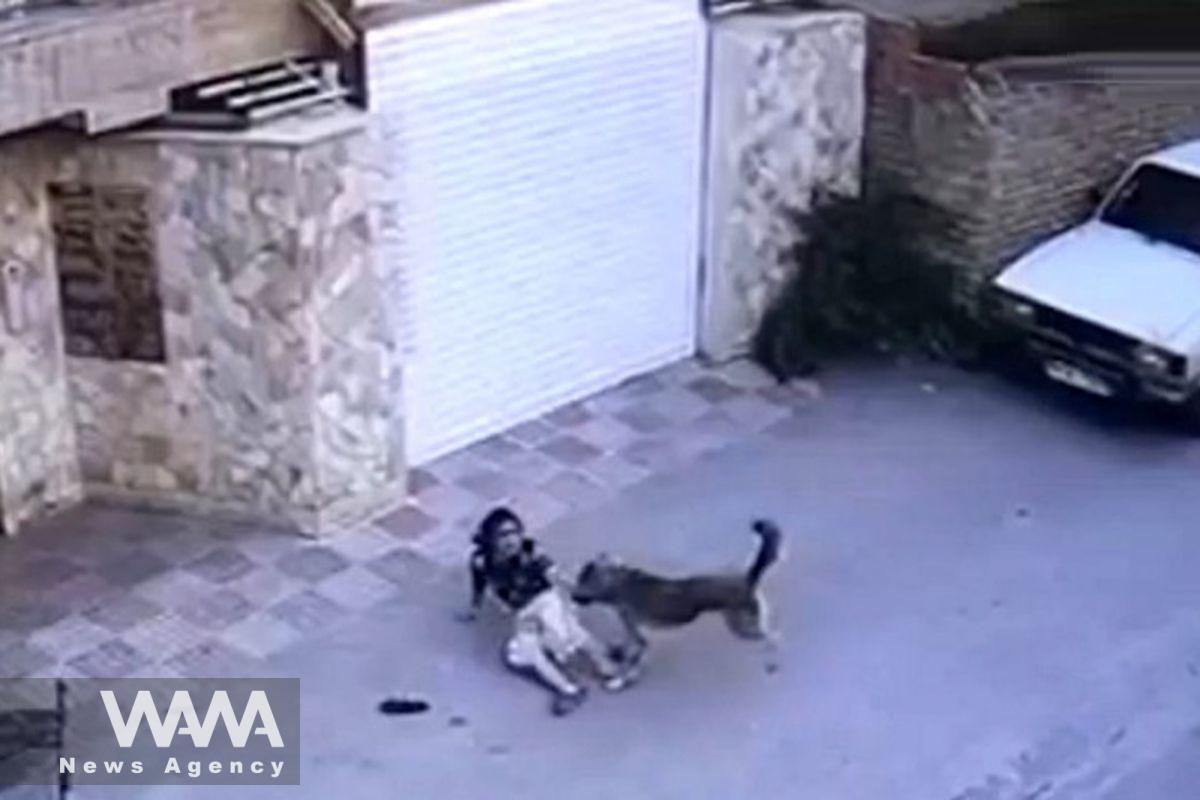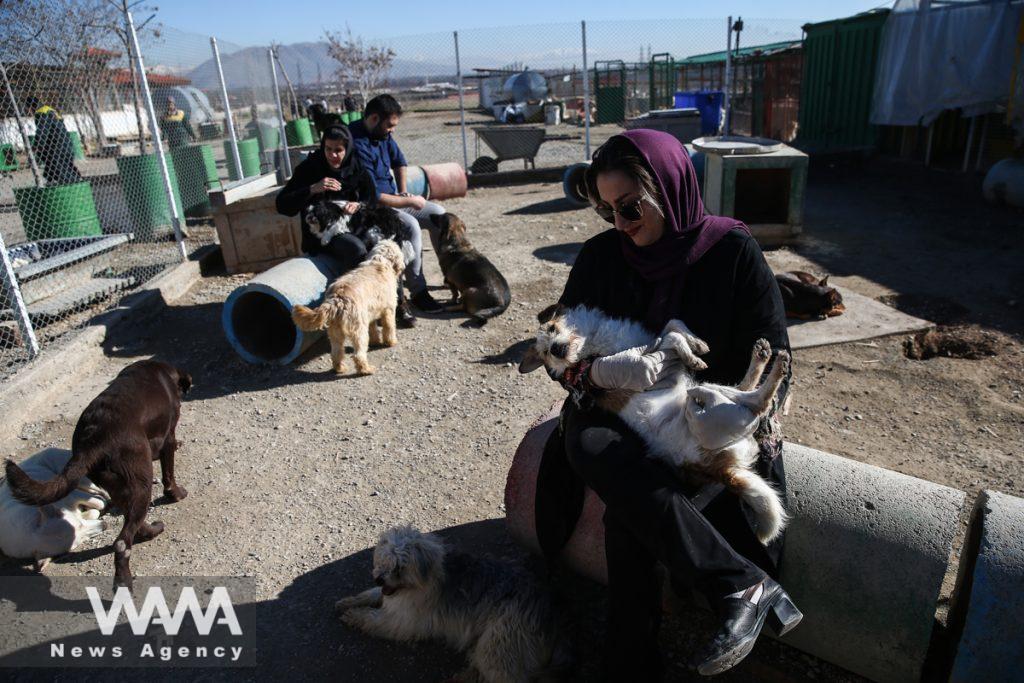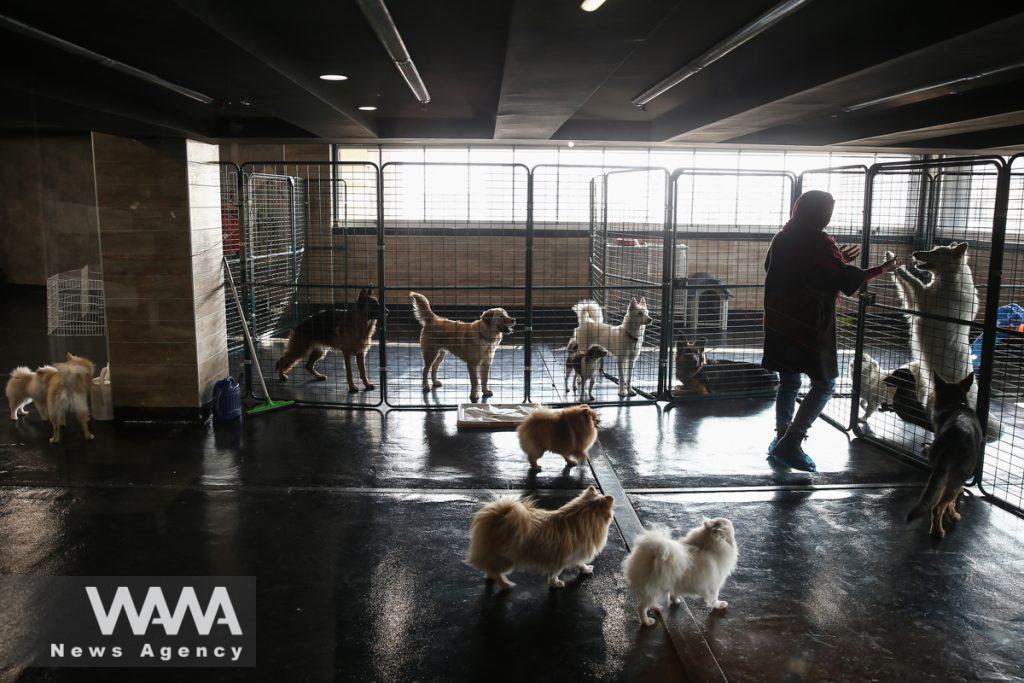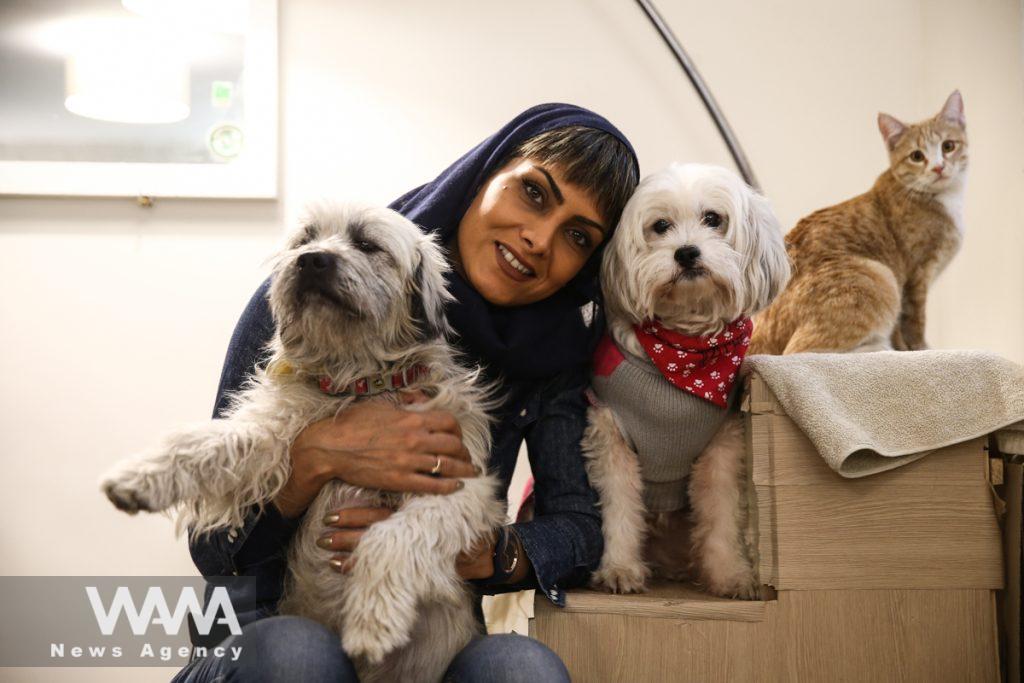Stray Dogs Issue in Iran: Animal Advocates or Victims of Silence?
WANA (Jan 18) – The story of animal advocacy and its devoted supporters is a long and complex one. With the rise of social media platforms and influencers, this movement has gained even more momentum—sometimes to the point where some people seem to forget that they are human themselves and must prioritize protecting their fellow humans above all else.
In the bustling streets of cities, from boys playing with their friends in alleys to girls heading home from school, excited to enjoy a meal lovingly prepared by their mothers, a single incident—a stray dog attack—can turn their joy into sorrow. News of such attacks by stray dogs casts a shadow over the community.
Dogs, animals long known as loyal guardians of humans, have increasingly become a threat to society. The rising number of stray dogs in many cities and villages across Iran—and even in other countries—has raised concerns, including health threats, an increase in dog bites, and the spread of the deadly disease rabies. In 2021 alone, over 50 people in Iran were killed by dogs, 35 of whom were children under the age of 10.
In 2021, the Tehran Municipality spent over $383509 on stray dogs, the Isfahan Municipality allocated over $287632, and the Yazd Municipality spent over $191755. Altogether, municipalities and rural councils in Iran spend approximately $1917546 annually on feeding stray dogs.

Zoha, a 9-year-old Iranian girl, went outside her home to retrieve an item from her father’s car when a dog attacked her. A few days later, due to contracting rabies from the dog bite, the child tragically passed away. Social media/ WANA News Agency
According to the head of the Environmental Department of Varamin (a county in Iran’s capital), improper public feeding practices have contributed to the country’s growing population of stray dogs. In contrast, in some countries, feeding stray dogs is considered a crime; the first offense results in a monetary fine, and subsequent violations can lead to the person’s arrest for posing a public health threat. However, in Iran, public awareness of this issue remains insufficient.
Reports indicate that the situation has escalated to the point where stray dogs are now entering protected areas, attacking and preying on animals such as rams, ewes, gazelles, and even the offspring of endangered species like cheetahs, leopards, and bears.
Iran, like other countries, initially resorted to killing stray dogs as a means to control their population. However, due to the consequences and challenges of this approach, it was abandoned in favor of the CNVR strategy, which is commonly adopted by developing nations.
CNVR stands for Catching, Neutering, Vaccinating, and Returning. This method involves capturing stray dogs, neutering them, vaccinating them, and then releasing them either in the same area where they were caught or in another location.

An 11-year-old Iranian boy was severely injured in a stray dog attack and was taken to the hospital. The child was on his way to the supermarket when he was attacked by four stray dogs in the alley. Social media/ WANA News Agency
However, examining countries’ experiences implementing this strategy reveals that it is not an entirely adequate solution. One major drawback of the CNVR system is that vaccination efforts are typically limited to rabies, neglecting other zoonotic diseases shared between dogs and humans. Many of these diseases cannot even be prevented through vaccination. Dogs carry more than 700 zoonotic diseases, and approximately 75% of infectious diseases affecting humans are shared with animals.
Rabies is the most significant disease shared between humans and dogs. Additionally, liver diseases like hydatid cysts and skin parasites such as Demodex and others can also be transmitted from dogs to humans. As a result, using this method in Iran has been doomed to failure based on statistical analysis, and continuing it is in no way advisable.
In contrast, the approach employed by developed and European countries, which is more logical and principled, is sheltering. In this method, stray and uncollared dogs are taken to shelters. Within 30 days, and at most two months, if no one volunteers to adopt the dog, it is euthanized (painless death).
In Iran, municipalities and the Ministry of the Interior are responsible for this task, and according to their statistics, there are nearly 200 shelters, of which dog enthusiasts privately run 30%; on the other side, 70% are government-operated, with the government funding them to control the dog population.

Iranian volunteers work and help dogs at Vafa Shelter in the city of Hashtgerd, 68 kilometer west of the capital Tehran, Iran December 20, 2019. Nazanin Tabatabaee/WANA (West Asia News Agency)
However, in Iran, due to the intense media backlash surrounding euthanasia and, unfortunately, the influence this public pressure has had on officials, the final step—euthanasia—is not carried out. As a result, no significant progress is made in controlling the population of stray animals.
If this shelter-based approach is implemented, animal welfare organizations would no longer have grounds for objection, as the government would have announced adoption opportunities, and if no one steps forward to adopt the dogs, euthanasia would be carried out as a last resort.
This method also helps governments manage the costs of caring for stray dogs. The first cost-saving measure comes from avoiding neutering. Currently, the materials required for sterilization alone cost around $38, but in these shelters, male and female dogs can be kept separately, thus eliminating the need for sterilization.
Until a few years ago, when the stray dog population in Iran had not yet grown so large, the statistics provided by the Pasteur Institute as the official authority on rabies in the country showed over 100,000 dog bites. These statistics were based on bites reported to health centers, though in many cases, people do not report them.

An Iranian woman visits dogs at the Pallapet boarding house at Palladium shopping mall in Tehran, Iran December 19, 2019. Picture taken December 19, 2019. Nazanin Tabatabaee/WANA (West Asia News Agency)
When a bite occurs, the individual visits a health center, knowing they must receive rabies and tetanus vaccines. The cost registered by the Pasteur Institute for each bite ranges between 5 and 7 euros per vaccine. If additional injections are required, the price increases to 30–40 euros. Multiplying this base cost of 5 to 7 euros by over 100,000 cases of bites imposes a significant financial burden on Iran, a cost that could be reduced with proper measures.
Last year, the number of reported bites exceeded 400,000, largely due to the rising population of stray dogs. (The cost of rabies vaccinations for this number of bites in Iran is approximately $3835091 annually!)
Aside from using this method, which is the best approach, legislation for dog owners should also not be overlooked. In Iran, there is no precise legislation in this area, and this requires the authorities’ intervention.
In developed countries, dog waste bags are mandatory because dog feces are considered a “biological bomb,” containing various viruses, microbes, and parasite eggs, many of which can be transmitted to humans. If a dog owner allows their pet to defecate on the street or in a park without cleaning it up, they endanger public health and face heavy fines in all developed countries. Unfortunately, there is no such law in Iran, and it is urgently necessary to introduce regulations.
In countries where pet ownership is regulated, even certain breeds of dogs are entirely prohibited because they pose serious threats to humans, with documented cases of fatalities caused by these breeds. The absence of such laws is also noticeable in Iran. Vaccinating these dogs is another important issue that needs attention.
Additionally, citizens can play a vital role in addressing this problem by cooperating with municipalities and reporting stray dogs. Educating children in schools about the importance of managing stray animals and maintaining ecological balance can also raise a more aware and responsible future generation.

Maryam Talaee is an animal lover. She poses for a photo at her apartment in Tehran, Iran December 20, 2019. Nazanin Tabatabaee/WANA (West Asia News Agency)












